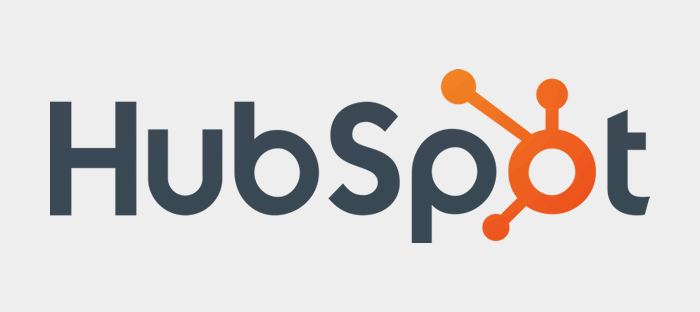What Is Inbound Marketing All About, Anyway?

You’ve probably heard the buzzword ‘Inbound Marketing’ lately. Yet, you might be wondering what it is and how it actually works to generate more customers in today’s digital landscape.
It’s sometimes easier to start by defining what inbound marketing isn’t: It isn’t outbound marketing, where brands push out their message to the masses. It isn’t advertising. It isn’t one-size-fits-all. And it isn’t disruptive.
Instead, with inbound marketing, a business pulls targeted prospects into the marketing funnel by delivering a focused narrative across multiple platforms.
Rather than view your website, email, blog, social media, SEO and more as stand-alone siloes, inbound marketing combines these tactics into a single, cohesive strategy designed to generate leads and produce engaged customers.
Why doesn’t outbound marketing work anymore?
Outbound marketing used to be a business’ only option.
But with the power of the Internet, today’s consumers don’t need to rely on commercials and direct mail to learn about new products and services.
Consumers are now fully in control.
They determine the information they receive and how they receive that information.
And they’re not going to wait for you to decide to send it to them. They’re going to go out and find it themselves.
Think about the e-mails you unsubscribe from because you aren’t interested in the product. Think about the way you watch Netflix without commercials. Think about how you throw away your direct mail without opening any of it, or how you block telemarketers from calling you.
Outbound marketing ultimately offers little to no value to the consumer. As a result, the consumer becomes disengaged.
In other words, outbound marketing just doesn’t work anymore.
On the other hand, inbound marketing offers exceptional content that strives to drive your consumer toward your company and your product.
The inbound marketing approach
Inbound marketing follows a four-step approach:

Attract targeted strangers
You don’t want just any prospects; you want the right prospects. Specifically, you’re looking for future leads who will then become satisfied customers (your ideal clients). And how do you attract these right prospects? By creating valuable content that will appeal to and engage your prospects.
Examples of this content include interesting blogs, targeted SEO, interactive social media, and captivating website copy.
Convert website visitors into leads
Once a prospect begins to engage with your content, the next step is convert those visitors into actual leads by gathering their e-mail addresses so you can continue the conversation through email marketing. And in order to get that coveted contact information, you need to offer even more engaging content.
Some digital tools that help convert visitors to leads include forms, enticing calls-to-action such as “Download this E-book” and keeping good records of your contacts so you can easily reach them.
Close more customers
Now we’re getting to the fun part! At this stage the marketer needs to strategically nurture and inspire those converted leads and transform them into actual customers.
Let’s say Suzy, your ideal customer, has found the content interesting on your website, has even filled out a form to receive a free e-book (in exchange for sharing her e-mail address), but isn’t a customer yet.
How do you keep Suzy engaged?
You engage her by sending her a series of targeted emails that contain relevant, thoughtful and interesting content.
Additionally, by paying close attention to the content that Suzy engages with, you can let your sales team know when it looks like she’s ready to take things to the next step. Now the sales team knows exactly what Suzy is interested in and how far along in her buying process she is, and they can use this information to close the deal and transition her from a lead to a customer.
Advanced digital tools that help in this closing process include a good CRM system to assist the sales cycle by allowing you to segment your email list. The ability to generate strategically-timed social media interactions is also immensely helpful as well.
Delight brand promoters
Well-done! Now Suzy is a satisfied customer. However, your work is far from over.
If you can continue to engage with Suzy, you can turn her into a happy promoter of your brand and products.
Again, you do this by delighting your current customer base with tailored messages and digital content.
Tools that can help delight customers include surveys, calls-to-action, text messages, and social media monitoring.
The outstanding results you can expect from inbound
If you haven’t noticed yet, there are two common threads to successful inbound marketing: creating valuable content and detailed data analysis. And these two factors are highly intertwined.
The more content you create, the more there is for your prospects to engage with, which means the more data points you can potentially collect. And the more you can learn about the needs and interests of your customers, the more you can continue to create content that delivers exceptional value.
With great inbound marketing, you’re continually measuring and optimizing your approach so that you can continually reach more of your target audience with the information and insights they can’t live without.
Or, as Hubspot, the marketing automation software we use and adore, explains: “Inbound marketing is about using marketing to bring potential customers to you, rather than having your marketing efforts fight for their attention … By creating content specifically designed to appeal to your dream customers, inbound attracts qualified prospects to your business and keeps them coming back for more.”
Inbound marketing works because it not only creates leads who are ready to become customers, it turns those customers into pleased promoters of your business.
Thinking about implementing inbound marketing in your business? Start by looking at the content you've already produced, to understand what's working, what isn't, and where your opportunities lie to boost your results across the board. Download our Content Audit Template to get started!





